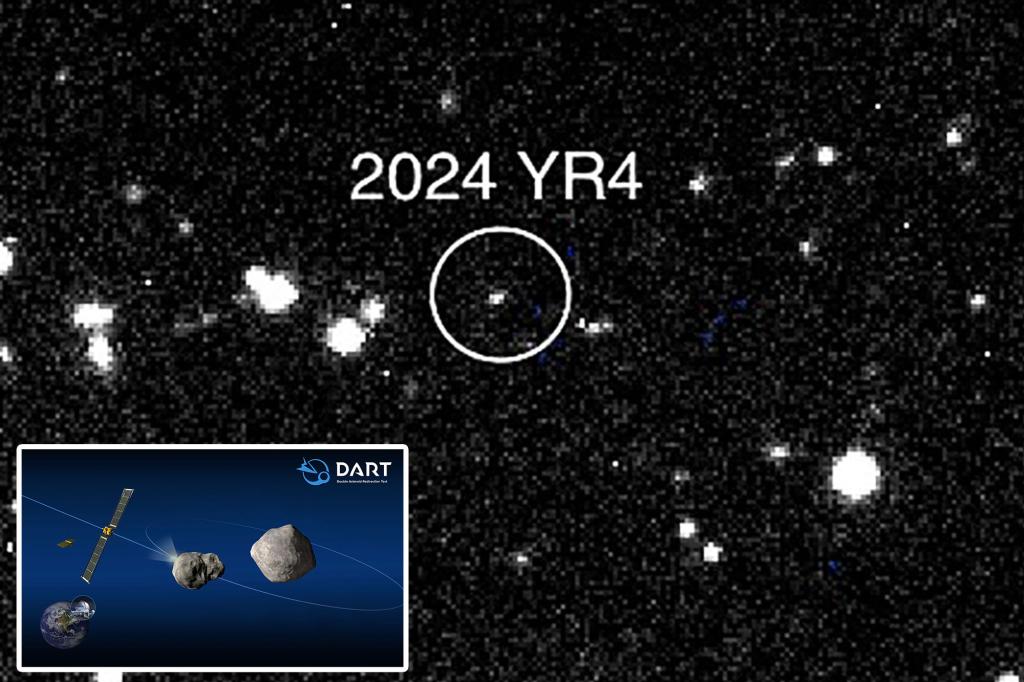
What a cosmic conundrum.
An award-winning scientist from the UK has raised alarm bells, suggesting it may already be too late to redirect the “city killer” asteroid heading towards Earth.
Dr. Robin George Andrews, a volcanologist and author based in London, cautioned via a chilling post on social media that efforts to deflect the asteroid 2024 YR4 “might not succeed.” This alarming statement has gained significant attention online.
First identified racing through the galaxy in December 2024, this asteroid, comparable in size to a building, ranks high on NASA’s list of potential cosmic threats, with a troubling 1-in-43 chance of colliding with Earth by 2032.
Though the statistical likelihood of disaster may appear low, Dr. Andrews believes we would be in serious jeopardy if the rogue asteroid is indeed on a collision course with our planet.
The scientist expressed skepticism about the effectiveness of the DART (Double Asteroid Redirection Test) spacecraft, which successfully altered the trajectory of a 580-foot-wide asteroid, Dimorphos, in 2022.
This bold cosmic endeavor reportedly reduced Dimorphos’ orbital period by over thirty minutes, potentially opening up future possibilities for humanity to steer other hazardous celestial objects away from Earth.
While Andrews acknowledged that the DART mission was a significant achievement, he cautioned that this success does not guarantee our ability to “deflect any asteroid whenever we wish.”
“A lot could go wrong if we attempt to hit it with a device like DART,” the researcher stated.
He highlighted that many asteroids consist of loose aggregates of sand, dirt, and boulders held together by gravity. When impacted, they could break apart, potentially sending fragments toward Earth—a scenario Andrews likened to “turning a cannonball into a scattershot.”
Even if a successful strike were achieved, the time constraints are formidable, Andrews warned. He noted that YR4 will arrive in just eight years, while planning and executing a deflection mission typically requires “10 years or more.”
Achieving a meaningful alteration in an asteroid’s trajectory is challenging, as the deflection impact from a kinetic impactor would be minimal at first, with DART only managing to change Dimorphos’ speed by a few millimeters. “It takes time for the modified orbit to accumulate enough to ensure a safe miss from Earth,” he explained.
“With only a limited timeframe available, it’s possible we might inadvertently redirect it—but insufficiently to prevent an impact,” Andrews theorized. “In that case, it might still hit Earth, just in an area not initially projected.”
A potential impact from YR4 could be catastrophic, resembling the devastation caused by the Tunguska event, which obliterated approximately 80 million trees in Siberia in 1908, according to reports from Space.com.
Despite the looming threat, Andrews reassured the public that 2024 YR4 is “likely to miss Earth.”
“However, if it does not miss, we must exercise caution against trying to mitigate the risk, as we might inadvertently exacerbate the situation,” he said. “It may be wiser to simply move out of the asteroid’s path this time.”
To gain greater insight into 2024 YR4, NASA has enlisted the help of the powerful James Webb Telescope. This state-of-the-art instrument will enable astronomers to accurately assess the asteroid’s size by measuring the heat it emits.
This critical data will be utilized by the European Space Agency (ESA), NASA, and other organizations to enhance the understanding of the threat and formulate any necessary responses, according to ESA’s announcements.









